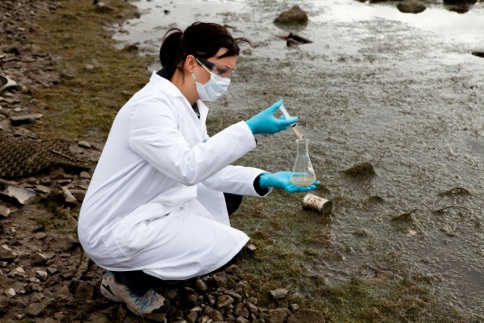A recent US study has concluded that the use of nanoparticles in consumer products is resulting in nanoparticles in drinking water sources and that treatment may not remove them.
The study looked at three common nanoparticles – zinc oxide, silver and titanium dioxide. The study found that in all cases nanoparticles were still detectable in treated water. The researchers warn that as concentrations of nanoparticles in the environment increase the drinking water is more likely to become contaminated. The researchers have called for the development of drinking water treatment processes that fully remove nanoparticles in order to prevent any harmful human health effects.
Australians don’t currently drink treated wastewater – at least not directly. However Perth is planning to do so within three years and in Queensland the infrastructure was installed but never turned on because of public opposition. However there are a number of places where treated wastewater is discharged into rivers that run into drinking reservoirs. Recycled water is also used extensively in irrigation, meaning it too may be re-entering both the food chain and the water system.
We may also be ingesting nanomaterials in other ways. For example, the majority of the sewage sludge resulting from the waste treatment process is used on agricultural land as a soil enhancer.
We know little of the fate or impacts of nanomaterials in soil, although the research that has been done so far suggests that nanomaterials can adversely affect soil micro-organisms, nitrogen fixing bacteria and earthworms – and can be absorbed by plants. We also don’t know the extent to which nanomaterials may enter waterways in runoff from agricultural land.
Since there is no mandatory register of nanomaterials its impossible to extremely difficult to even determine the scale of the problem. We don’t know what types of nano waste there is and what quantities. And we still don’t have a good understanding of where it is going, how it may be interacting with other chemicals and what happens to it over time.
On top of that not so nano ignorance, is the reality that our we don’t have adequate detection methods to even find out what nanomaterials are in our water, nor methods to ensure the removal of the various nanomaterials from our water, soil and perhaps even our food – once we’re able to find them.
Tom Lehrer once said, ‘don’t drink the water, don’t breathe the air.’ Probably not the most realistic response, but neither is blissful, chronic and bloody minded ignorance.
The Study: Abbott Chalew, T.E. et al. (2013) Evaluating Nanoparticle Breakthrough during Drinking Water Treatment, Environmental Health Perspectives, 121(10):1161-1166.


